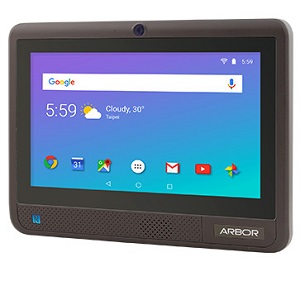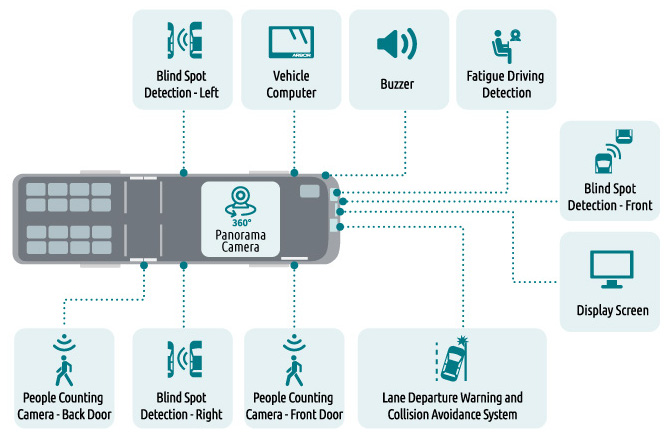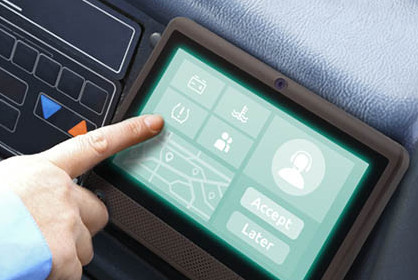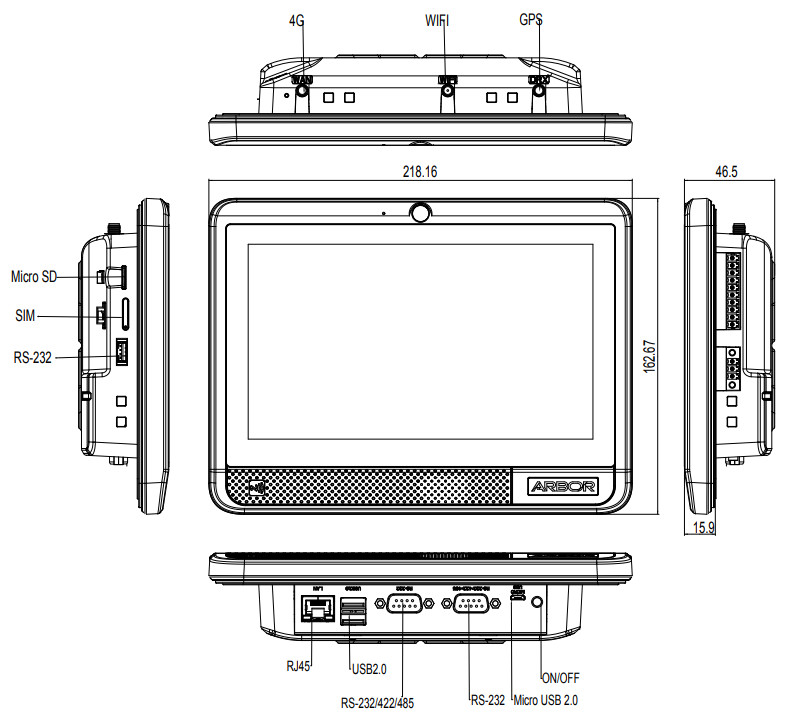Rockchip PX30 based in-vehicle system supports OBD-II telematics and ADAS

Arbor’s 8-inch “IOT-800N” automotive telematics panel PC for ADAS and fleet management runs Android 8.1 or Linux on a quad -A35 Rockchip PX30 and offers CAN/OBD-II, 4G, GPS, WiFi/BT, NFC, and an 8MP camera.
Arbor announced a Rockchip PX30-based telematics computer with an 8-inch touchscreen for Advanced Driver Assistance System (ADAS) and fleet management that is aimed primarily aimed at improving safety in buses. The IoT-800N plugs into a vehicle’s OBD-II protocol telematics computer via a CAN interface to support ADAS applications such as lane departure warnings, blind-spot detection, and collision avoidance. It can also enable driving monitoring such as fatigue and driving behavior detection.

By attaching various sensors, the IOT-800N can test the driver’s heart rate or process breathalyzer test input, says Arbor. The system can count passengers boarding and exiting the bus and even automatically detect if a passenger has fallen. Wireless features including optional LTE keeps the system connected to the cloud for fleet management applications.
The IOT-800N defaults to Android 8.1 but Arbor also offers a Build to Order (BTO) service for customers who would rather use an Ubuntu and Buildroot Linux stack. The quad-core, Cortex-A35 Rockchip PX30, which is typically clocked to 1.5GHz, provides a Mali-G31 MP2 GPU and an HD video processor. Earlier this year, Arbor used the SoC on its RP-101K open frame panel PC.
The IOT-800N provides an 8-inch, 1024 x 600 touchscreen with 5-point projected capacitive multi-touch. The LVDS-connected screen offers 500 cd/m² brightness, a 700:1 contrast ratio, and 70° viewing angles.
The computer is further equipped with a 1W speaker, a microphone, and a front-facing, MIPI-CSI-connected, 8-megapixel camera. There do not appear to be any other available camera interfaces, so the ADAS and passenger-counting features would presumably require a separate camera system plugged into the OBD-II telematics and/or possibly connected to the IOT-800N via WiFi or Ethernet.


The IOT-800N ships with 2GB DDR4 and 16GB eMMC soldered to the mainboard and provides a microSD slot for up to 128GB storage. Major ports include 2x USB 2.0, micro-USB 2.0, RS-232/422/485, RS-232, 10/100 Ethernet, and CAN/OBD-II. You also get 3x-in/3x-out DIO.
Wireless features include 802.11a/b/g/n/ac with Bluetooth 4.2 LE and a mini-PCIe slot with an optional global band WCDMA/LTE module that also provides GPS with Galileo, GLONASS, BeiDout, and QZSS. A standard, 13.56MHz RFID and NFC reader provides ISO 14443A/14443B/15693 and mifare support. Antennas are optional
The IOT-800N has an in-vehicle friendly 9-36VDC terminal block input with ignition detection, a power switch, and optional US and EU adapters. The VESA-mountable, 218.16 x 162.67 x 46.5mm system weighs 940 grams. It supports -20 to 70°C temperatures with 5~90% RH@50°C (non-condensing) humidity tolerance.
Other OBD-II compatible in-vehicle computers include the Raspberry Pi Zero W based AutoPi and iWave’s Connected Car Device — OBD II. Today, iWave announced a proprietary ISO 15765 stack for its OBD II device. The stack provides a customizable API for handling diagnostics data over the ISO 15765 CAN network.





